In a world where technology continually reshapes our daily lives, 3D printing food stands as a shining example of innovation intersecting with one of humanity's most basic needs: nourishment. This remarkable fusion of technology and culinary artistry has the power to revolutionize the way we prepare, customize, and experience food. In the following pages, we will embark on a tantalizing journey through the realm of 3D printing food, from the very concept to its far-reaching implications.
The Concept of 3D Printing Food
Imagine a future where your dinner plate is not limited by the constraints of traditional cooking methods. Instead, it's a canvas for your culinary dreams. 3D printing food is a groundbreaking technology that transforms edible ingredients into intricate, customizable creations. It does so by layering these ingredients, one pixel at a time, to form delectable dishes that were once reserved for the imaginations of science fiction writers and visionary chefs.
The Importance of 3D Printing Food
The importance of 3D printing food in the culinary world cannot be overstated. It offers solutions to some of the most pressing challenges facing our global society. As populations grow and resources become scarcer, traditional agriculture and food production methods may not suffice. 3D printing food holds the promise of efficiency, sustainability, and customization, all while pushing the boundaries of culinary artistry.
What to Expect In This Article
This article aims to be your comprehensive guide to the captivating world of 3D printing food. Within its pages, we will delve into the history and evolution of this technology, exploring its scientific foundations and artistic applications. We will uncover the vast culinary possibilities it offers, from personalized nutrition to intricate food design. However, we will not shy away from the challenges and ethical considerations that accompany such an innovation. Throughout this journey, you'll meet pioneers in the field, gain insights from experts, and even find practical tips for experimenting with 3D printing food in your own kitchen.
Buckle up, dear reader, as we embark on a gastronomic adventure where pixels become palates, and the future of food takes shape one layer at a time. Together, we'll explore the incredible world of 3D printing food, and by the end of this book, you'll have a deeper understanding of how this technology is reshaping the way we think about, prepare, and savor our meals.
1: The Evolution of Food Printing
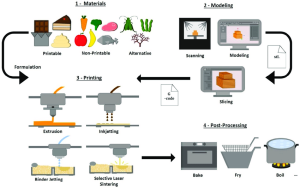 In the world of culinary innovation, the evolution of 3D printing food represents a remarkable journey that stretches back further than one might expect. This chapter delves into the fascinating history and development of 3D printing in the food industry, shedding light on the key milestones and innovations that have shaped this groundbreaking field.
In the world of culinary innovation, the evolution of 3D printing food represents a remarkable journey that stretches back further than one might expect. This chapter delves into the fascinating history and development of 3D printing in the food industry, shedding light on the key milestones and innovations that have shaped this groundbreaking field.
The Birth of an Idea
The concept of 3D printing food was, at its inception, a product of science fiction and imagination. Early pioneers in the field envisioned a future where food could be crafted with precision and efficiency, but the technology to turn this vision into reality was still in its infancy.
From Laboratory to Kitchen
The journey from laboratory experiments to kitchen-ready 3D printers was a gradual one. In the early 2000s, researchers began experimenting with printing edible materials. These early attempts were rudimentary, often involving basic pastes and gels, but they laid the foundation for what was to come.
Key Milestones
As technology advanced, so did the capabilities of 3D food printing. Some of the key milestones along this journey include:
- The Emergence of Edible Inks: The development of edible inks allowed for the printing of intricate patterns and designs on food items, opening up new possibilities for culinary creativity.
- Customization and Personalization: 3D food printing began to focus on customization, enabling chefs and consumers to tailor the texture, flavor, and nutritional content of their meals. This marked a significant shift towards meeting individual dietary needs and preferences.
- Commercialization: With the advent of more affordable and user-friendly 3D food printers, the technology started to find its way into professional kitchens and even some home kitchens. Commercial food companies began to experiment with large-scale 3D printing for mass production.
- Fine Dining and Culinary Artistry: Renowned chefs started incorporating 3D printing into their culinary creations, pushing the boundaries of artistic presentation and flavor combinations.
- Healthcare and Nutrition: The technology found applications beyond the culinary world. It became a tool for creating specialized, nutrient-dense meals for individuals with specific dietary requirements, such as athletes and patients in healthcare settings.
Innovations That Shaped the Field
Throughout this evolution, numerous innovations have shaped the field of 3D printing food. These innovations include advancements in printer design, the development of specialized food-grade printing materials, and breakthroughs in software for designing and controlling 3D-printed food.
As we journey through the pages of this chapter, we'll uncover the pivotal moments and brilliant minds that have brought us to the cusp of a culinary revolution. From the first inkling of an idea to the cutting-edge technology of today, the evolution of 3D printing food is a testament to human creativity and the endless possibilities that lie at the intersection of science and gastronomy.
2: The Science Behind 3D Printed Food

To truly appreciate the artistry and potential of 3D printing food, one must delve into the science that underpins this culinary revolution. In this chapter, we will explore the intricate principles of 3D printing and how they are ingeniously applied to the realm of gastronomy. We'll also delve into the materials, ingredients, and technologies that play a pivotal role in bringing these edible creations to life.
Principles of 3D Printing and Its Culinary Application
At its core, 3D printing is a process of additive manufacturing, wherein objects are created layer by layer. These are the fundamental principles that apply to 3D printing food:
- Layer-by-Layer Deposition: In traditional 3D printing, materials such as plastic or metal are deposited layer by layer to form three-dimensional objects. In food printing, this same concept applies, albeit with edible materials.
- Digital Modeling: The process begins with a digital model or design of the desired food item. This design serves as the blueprint for the 3D printer, dictating the shape, size, and structure of the edible creation.
- Precise Control: 3D printers offer precise control over the deposition of edible materials, allowing for intricate and customized designs. The printer's nozzle or syringe releases controlled amounts of food material, which solidifies or set in place.
Materials, Ingredients, and Technologies
The success of 3D printing food relies heavily on the materials, ingredients, and technologies at play. Here's a closer look:
- Edible Ingredients: The building blocks of 3D-printed food include a wide array of edible ingredients. These can range from vegetable and fruit purees to protein-based materials like meat or tofu. Even carbohydrates like pasta and rice can be used as printable ingredients. The choice of ingredients influences not only the taste but also the texture and nutritional content of the final product.
- Specialized Printing Materials: To ensure that the food materials are suitable for printing, specialized 3D printing materials may be formulated. These materials often have the right texture and consistency for the printing process and can be customized for specific applications.
- Cooling or Solidification: Depending on the ingredients used, cooling or solidification steps between layers may be required to maintain the desired shape and texture. These steps ensure that the layers adhere together, forming a cohesive whole.
- Support Structures: In certain cases, edible support structures are printed alongside the main food item. These supports provide stability during printing and can be removed after the printing process is complete.
- Printing Technologies: Various types of 3D printing technologies are employed in food printing. These include extrusion-based methods, inkjet printing, and powder-based printing, each with its own set of advantages and limitations.
- Digital Control Systems: Sophisticated software and digital control systems are used to precisely control the movements of the 3D printer and the deposition of food materials. This level of precision is essential for creating intricate and customized designs.
As we venture deeper into the fascinating world of 3D printing food, we will uncover how these scientific principles and technologies harmonize to redefine the boundaries of culinary artistry. The next chapters will delve into the diverse culinary applications, the nutritional advantages, and the challenges that this cutting-edge technology brings to the table.
3: The Art of Food Design
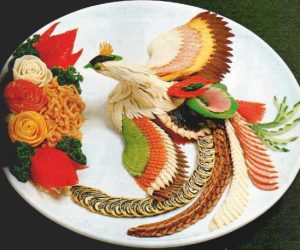 In the world of culinary innovation, 3D printing food offers a canvas unlike any other. This chapter delves into the creative aspect of designing 3D-printed food, where imagination meets technology to produce culinary masterpieces. We will explore the boundless creative potential this technology unlocks, showcase examples of intricate and artistic food designs, and discuss the fascinating intersection of art and technology in culinary creations.
In the world of culinary innovation, 3D printing food offers a canvas unlike any other. This chapter delves into the creative aspect of designing 3D-printed food, where imagination meets technology to produce culinary masterpieces. We will explore the boundless creative potential this technology unlocks, showcase examples of intricate and artistic food designs, and discuss the fascinating intersection of art and technology in culinary creations.
The Creative Frontier of 3D Printing Food
3D printing food represents a new frontier for culinary creativity. Unlike traditional cooking methods, which are often limited by the laws of physics and the capabilities of human hands, 3D food printing transcends these constraints. Chefs and food artists can dream up designs that were once considered unattainable, and these designs can be translated into edible reality with precision.
From Pixels to Palate
The journey of transforming a digital design into a tantalizing dish is a testament to the merging of art and technology. The process involves translating a 3D model into specific printing instructions, accounting for factors like texture, taste, and structural stability. This fusion of the digital and the edible is a breathtaking dance where pixels become palates.
Showcasing Artistic Food Designs
Within the pages of this chapter, we will showcase awe-inspiring examples of artistic food designs crafted through 3D printing. These creations go beyond the conventional expectations of what food can be. From delicately designed chocolate sculptures to intricately layered multi-textured dishes, these edible artworks push the boundaries of culinary aesthetics.
The Intersection of Art and Technology
The intersection of art and technology in culinary creations is where 3D printing food truly shines. It challenges traditional notions of food preparation as a purely functional endeavor and elevates it to the realm of artistry. It's a medium where chefs and food designers become both creators and curators, where every element of a dish can be tailored to evoke emotions and tell a story.
Beyond Aesthetics: Flavor and Texture
While the visual aspect of 3D-printed food is captivating, the artistry goes beyond aesthetics. Chefs and food scientists have harnessed this technology to manipulate flavor profiles and textures in ways previously unattainable. This means that 3D-printed food isn't just visually striking; it's a multisensory experience that engages taste, texture, and aroma.
As we journey through this chapter, prepare to be enthralled by the artistic prowess that 3D printing food brings to the culinary world. These creations are a testament to human ingenuity, where technology transcends its utilitarian role to become a medium of artistic expression, taking us from pixels to palate in the most extraordinary fashion.
4: The Culinary Applications
 In the ever-evolving world of gastronomy, 3D printing food has emerged as a powerful tool that transcends the boundaries of conventional cooking. This chapter embarks on a culinary adventure to explore the myriad applications of 3D-printed food. From fine dining to everyday cooking, we'll uncover how this technology is reshaping the way we prepare, savor, and share our meals. Moreover, we'll delve into the exciting potential for personalized and customizable culinary experiences.
In the ever-evolving world of gastronomy, 3D printing food has emerged as a powerful tool that transcends the boundaries of conventional cooking. This chapter embarks on a culinary adventure to explore the myriad applications of 3D-printed food. From fine dining to everyday cooking, we'll uncover how this technology is reshaping the way we prepare, savor, and share our meals. Moreover, we'll delve into the exciting potential for personalized and customizable culinary experiences.
Fine Dining and Gastronomic Exploration
In the realm of fine dining, 3D-printed food has elevated culinary experiences to new heights. Renowned chefs have embraced this technology to craft exquisite dishes that captivate not only the taste buds but also the eyes and imaginations of their patrons. These creations push the boundaries of what's possible in gastronomy, resulting in dishes that are intricate, visually stunning, and bursting with flavor.
Catering and Event Dining
Beyond the hallowed halls of fine dining establishments, 3D printing food has found its place in catering and event dining. It offers a unique opportunity to provide guests with memorable and personalized culinary experiences. Imagine customized hors d'oeuvres that reflect the theme of a wedding or corporate event, all made possible with the precision and efficiency of 3D food printing.
Everyday Cooking Transformed
While 3D printing food may have made its debut in high-end kitchens, its influence is rapidly expanding to everyday cooking. As 3D printers become more accessible, home cooks are experimenting with this technology to create personalized meals for their families. From crafting intricate cake decorations to shaping pasta into unique designs, 3D printing food allows for a level of culinary creativity that was once reserved for professionals.
The Potential for Personalization
One of the most compelling aspects of 3D-printed food is its potential for personalization. With this technology, meals can be tailored to individual tastes, dietary restrictions, and nutritional needs. Athletes can enjoy meals designed to optimize their performance, while individuals with specific dietary requirements can savor dishes crafted to meet their unique needs. The era of one-size-fits-all food is giving way to a world of culinary personalization.
Customizable Nutritional Profiles
In addition to personalized flavors and textures, 3D-printed food offers the tantalizing prospect of customizable nutritional profiles. The balance of macronutrients, vitamins, and minerals in a meal can be precisely controlled, ensuring that each bite serves a specific nutritional purpose.
As we journey through this chapter, we will uncover the diverse and transformative culinary applications of 3D-printed food. Whether in Michelin-starred restaurants, catering events, or in the comfort of your home kitchen, this technology is reshaping the way we think about food. It's a culinary revolution that embraces creativity, customization, and a new era of gastronomic possibilities.
5: Nutrition and Health Benefits
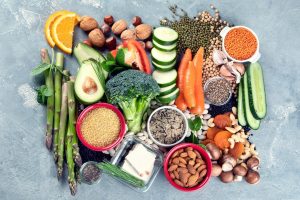 The intersection of technology and nutrition takes center stage in the realm of 3D-printed food. In this chapter, we will delve into the nutritional advantages that this innovative culinary approach offers. We'll explore how 3D-printed food can effectively address dietary restrictions and cater to specific nutritional needs. Additionally, we'll showcase real-world case studies of athletes and individuals who have reaped the benefits of personalized nutrition through 3D printing.
The intersection of technology and nutrition takes center stage in the realm of 3D-printed food. In this chapter, we will delve into the nutritional advantages that this innovative culinary approach offers. We'll explore how 3D-printed food can effectively address dietary restrictions and cater to specific nutritional needs. Additionally, we'll showcase real-world case studies of athletes and individuals who have reaped the benefits of personalized nutrition through 3D printing.
The Nutritional Advantages of 3D Printed Food
The nutritional landscape of 3D-printed food is rich and diverse. By leveraging precise control over ingredients and portion sizes, this technology allows for the creation of meals that are tailored to individual dietary requirements. This level of customization opens up a world of possibilities for improving overall nutrition and well-being.
Addressing Dietary Restrictions
For individuals with dietary restrictions, 3D-printed food is a game-changer. Whether it's allergies, intolerances, or specific dietary choices (such as vegan or gluten-free), this technology can ensure that meals are prepared without compromising health or taste. We'll explore how 3D printing enables chefs and home cooks to create dishes that adhere to even the strictest dietary guidelines.
Optimizing Athlete Nutrition
Athletes at the pinnacle of their respective sports require precise nutrition to fuel their performance and recovery. 3D-printed food has been embraced by sports nutritionists and trainers to craft meals that align with the unique nutritional demands of athletes. We will examine case studies of how personalized 3D-printed meals have become a secret weapon in enhancing athletic performance.
Case Studies: Personalized Nutrition in Action
Throughout this chapter, we will share compelling case studies that illustrate the real-world impact of 3D-printed food on individuals' health and well-being. These stories will showcase how this technology has transformed the lives of people with various dietary needs and preferences. From managing chronic conditions to achieving fitness goals, personalized nutrition through 3D printing is rewriting the script of how we approach food and health.
The Future of Nutrition
As we navigate the nutritional advantages of 3D-printed food, we'll also peer into the future. The potential for further innovation in this field is immense. From the optimization of nutrient delivery to the development of sustainable food sources, 3D printing promises to be a driving force in shaping the future of nutrition.
In this chapter, we will unravel the incredible potential that 3D-printed food holds for revolutionizing the way we nourish our bodies. It's a journey into a world where each meal is a meticulously crafted masterpiece designed to meet our unique dietary needs, one layer at a time.
6: Challenges and Ethical Considerations
 As we continue our exploration of 3D-printed food, it is essential to shed light on the challenges and ethical considerations that accompany this transformative technology. While the potential benefits are immense, we must also grapple with the complexities and limitations inherent to 3D-printed food. This chapter will delve into the obstacles that must be overcome, from issues of food safety and regulation to sustainability concerns and the ethical implications of automating food production.
As we continue our exploration of 3D-printed food, it is essential to shed light on the challenges and ethical considerations that accompany this transformative technology. While the potential benefits are immense, we must also grapple with the complexities and limitations inherent to 3D-printed food. This chapter will delve into the obstacles that must be overcome, from issues of food safety and regulation to sustainability concerns and the ethical implications of automating food production.
The Challenges and Limitations of 3D Printed Food
3D printing food is not without its challenges and limitations. Some of these include:
- Complexity of Ingredients: The range of printable ingredients is currently limited, which can restrict the diversity of dishes that can be created.
- Texture and Palatability: Achieving the desired texture and taste in 3D-printed food can be challenging, as it depends on factors such as ingredient selection, layering techniques, and post-processing.
- Speed and Efficiency: 3D printing food can be a slow process, which may not be suitable for high-demand environments like fast-food restaurants.
Food Safety and Regulatory Issues
Ensuring the safety of 3D-printed food is paramount. This technology introduces new considerations for food safety, including:
- Contamination Risk: The printing process must be carried out in a sterile environment to prevent contamination of the food.
- Regulatory Compliance: The regulation of 3D-printed food varies by region, and there is a need for standardized guidelines to ensure consistent quality and safety.
- Quality Control: Maintaining quality and consistency in 3D-printed food production is a challenge, as it relies heavily on precise equipment calibration.
Sustainability Concerns
Sustainability is a pressing concern in the food industry. 3D printing food can contribute to sustainability in some ways, such as reducing food waste through precise portion control. However, there are also sustainability challenges:
- Materials and Waste: The production of specialized printing materials and energy-intensive printing processes may have environmental impacts.
- Energy Usage: The energy required for 3D printing processes, particularly in large-scale production, is a consideration for sustainability.
Ethical Implications of Automating Food Production
The automation of food production through 3D printing raises ethical questions:
- Employment: The automation of food preparation may reduce the need for manual labor in the culinary industry, potentially displacing workers.
- Cultural and Traditional Aspects: The use of technology in food preparation may raise concerns about preserving cultural and traditional cooking methods.
- Access and Equity: Ensuring equitable access to 3D-printed food and preventing it from becoming a privilege of the wealthy is an ethical concern.
As we confront these challenges and ethical considerations, it is essential to recognize that 3D printing food is a rapidly evolving field. Addressing these issues requires collaboration between scientists, chefs, policymakers, and ethicists to strike a balance between innovation and responsibility. It is through a nuanced understanding of these complexities that we can fully appreciate the transformative potential of 3D-printed food while ensuring its safe and ethical integration into our culinary landscape.
7: Future Trends and Innovations
 As we journey further into the realm of 3D-printed food, it's crucial to peer into the future and glimpse the innovations and trends that lie ahead. This chapter will serve as our crystal ball, predicting the future of 3D-printed food and exploring emerging trends that promise to reshape the culinary landscape. We will discuss ongoing research and developments in this dynamic field and consider the profound impact these advancements may have on the food industry and our daily lives.
As we journey further into the realm of 3D-printed food, it's crucial to peer into the future and glimpse the innovations and trends that lie ahead. This chapter will serve as our crystal ball, predicting the future of 3D-printed food and exploring emerging trends that promise to reshape the culinary landscape. We will discuss ongoing research and developments in this dynamic field and consider the profound impact these advancements may have on the food industry and our daily lives.
Customization Beyond Imagination
The future of 3D-printed food holds the promise of unparalleled customization. Imagine a world where every meal is precisely tailored to your individual preferences and nutritional needs. Emerging trends suggest that personalized nutrition through 3D printing will become increasingly accessible, allowing individuals to optimize their health and well-being through diet like never before.
Sustainability and Food Security
As the global population continues to grow, the need for sustainable food production becomes more pressing. 3D printing food may offer solutions to these challenges. Researchers are exploring the use of alternative ingredients, including insects and algae, to create nutritious and environmentally friendly food products. In the future, 3D printing may play a significant role in addressing food security and reducing the environmental footprint of food production.
Advancements in Food Materials
The evolution of food materials is at the heart of 3D printing food's future. Scientists are developing novel materials with improved taste, texture, and nutritional profiles specifically designed for 3D printing. These materials will expand the possibilities of what can be created, from plant-based meats that mimic the real thing to intricate dessert sculptures that delight the senses.
The Role of AI and Machine Learning
Artificial intelligence (AI) and machine learning are poised to revolutionize 3D-printed food. These technologies can analyze vast datasets of consumer preferences, nutritional needs, and culinary trends to generate unique recipes and meal plans. This could result in food creations that are not only delicious but also scientifically optimized for health and taste.
Impact on the Food Industry and Everyday Life
The impact of 3D-printed food on the food industry and everyday life is poised to be transformative. Restaurants may adopt 3D printing technology to streamline their operations and offer innovative dining experiences. Home cooks may have access to affordable 3D printers that enable them to prepare customized, restaurant-quality meals at home. Additionally, food supply chains may become more efficient and sustainable as 3D printing allows for on-demand production.
Challenges and Ethical Considerations on the Horizon
While the future of 3D-printed food holds immense promise, it is not without challenges and ethical considerations. As the technology becomes more widespread, questions about equitable access, cultural preservation, and the potential displacement of traditional culinary skills will need to be addressed.
As we conclude this chapter, we stand on the precipice of a culinary revolution driven by 3D printing food. The future is filled with tantalizing possibilities that promise to reshape how we think about, prepare, and enjoy our meals. It is a future where innovation knows no bounds, where pixels and palates merge, and where every bite is a taste of the extraordinary.
8: DIY Food Printing
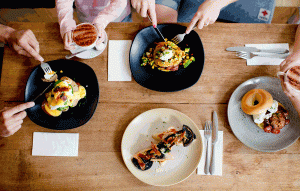 In the world of 3D-printed food, the culinary laboratory extends far beyond professional kitchens. With the growing accessibility of 3D printers, more and more enthusiasts are eager to experiment with this transformative technology in the comfort of their homes. This chapter is your guide to embarking on your own journey of DIY food printing. We'll provide you with valuable guidance, share resources, and recipes, and offer tips for beginners who are eager to explore the delectable world of 3D-printed cuisine.
In the world of 3D-printed food, the culinary laboratory extends far beyond professional kitchens. With the growing accessibility of 3D printers, more and more enthusiasts are eager to experiment with this transformative technology in the comfort of their homes. This chapter is your guide to embarking on your own journey of DIY food printing. We'll provide you with valuable guidance, share resources, and recipes, and offer tips for beginners who are eager to explore the delectable world of 3D-printed cuisine.
Getting Started with 3D Food Printing
For those new to 3D food printing, it's essential to start with the basics:
- Choose the Right 3D Printer: Select a 3D printer that is suitable for food printing. There are various models available, so consider factors such as price, size, and ease of use.
- Understand the Materials: Familiarize yourself with the food-grade materials compatible with your printer. These may include chocolate, frosting, and various edible pastes.
- Learn the Software: Get comfortable with the software used to design and control the 3D printer. Practice creating simple designs before moving on to more complex culinary creations.
- Food Safety: Prioritize food safety. Ensure your workspace is clean, and practice proper hygiene when handling ingredients and equipment.
Resources for DIY Food Printing
To assist you on your DIY food printing journey, there are several valuable resources available:
- Online Communities: Join online forums, groups, and communities where fellow food printing enthusiasts share their experiences, recipes, and troubleshooting tips.
- YouTube Tutorials: Video tutorials can be invaluable for visual learners. Search for instructional videos that guide you through the process of setting up and using your 3D printer for food.
- Recipe Websites: Explore websites dedicated to 3D-printed food recipes. These platforms often provide step-by-step instructions and downloadable design files for beginners.
- Cookbooks: Look for cookbooks that specifically focus on 3D-printed food. These books often include detailed recipes and design templates to help you get started.
Beginner-Friendly 3D Printed Food Ideas
As a beginner, start with simple 3D-printed food ideas to build your confidence:
- Customized Cake Toppers: Create personalized cake toppers for special occasions using edible materials like frosting or chocolate.
- Chocolate Art: Experiment with intricate chocolate designs that can adorn desserts or serve as standalone treats.
- Pasta Shapes: Design your own pasta shapes and use 3D printing to bring them to life. Pasta dough can be printed to craft unique shapes and designs.
- Cookie Decorations: Add a creative touch to your cookies by printing edible decorations that can be attached after baking.
Tips for Success
Here are some essential tips to ensure success in your DIY food printing endeavors:
- Start Simple: Begin with uncomplicated designs and recipes to familiarize yourself with the process.
- Patience is Key: 3D food printing can be a slow process, so exercise patience while your creations take shape.
- Experiment and Learn: Don't be afraid to experiment with flavors, textures, and ingredients to create your own unique 3D-printed dishes.
- Document Your Creations: Keep a record of your successful prints and experiments, noting what worked and what didn't. This will help you refine your skills over time.
As you embark on your journey of DIY food printing, remember that it's a delightful blend of science, art, and culinary innovation. With the right resources and a passion for creativity, you'll be well on your way to crafting edible masterpieces in the comfort of your own kitchen. Happy printing!
9: Interviews and Case Studies
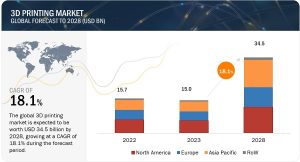 To gain deeper insights into the world of 3D-printed food and to showcase the real-world applications of this innovative technology, this chapter is dedicated to interviews with experts and pioneers in the field. Additionally, we will present compelling case studies of restaurants, companies, and individuals who have harnessed the power of food printing in extraordinary and innovative ways.
To gain deeper insights into the world of 3D-printed food and to showcase the real-world applications of this innovative technology, this chapter is dedicated to interviews with experts and pioneers in the field. Additionally, we will present compelling case studies of restaurants, companies, and individuals who have harnessed the power of food printing in extraordinary and innovative ways.
Expert Interviews
- Interview with Dr. FoodTech Pioneer: Dr. Sandra Nguyen, a renowned food scientist and 3D printing enthusiast, shares her perspective on the science behind 3D printed food and its potential impact on nutrition and sustainability.
- Chef's Insights: Chef Antoine Lefebvre, a Michelin-starred chef who has incorporated 3D printing into his culinary creations, discusses the artistry and challenges of using this technology in fine dining.
- Nutritionist's Perspective: Registered Dietitian Sarah Turner shares her thoughts on the nutritional advantages and considerations of 3D-printed food, especially for individuals with specific dietary needs.
Case Studies
- Restaurant of the Future: Explore the story of a cutting-edge restaurant that has fully embraced 3D printing food, offering guests personalized, on-demand meals that push the boundaries of culinary creativity.
- Innovative Food Startup: Discover how a startup company is using 3D printing to create plant-based meat alternatives that mimic the taste and texture of traditional meat products, contributing to sustainability and health.
- Athlete's Customized Diet: Follow the journey of a professional athlete who relies on 3D-printed food to meet precise nutritional requirements, optimizing their performance and recovery.
- Community Food Initiative: Learn about a grassroots initiative that employs 3D printing to address food scarcity in underserved communities, providing nutritious meals and culinary education to those in need.
- Home Cook's Creative Kitchen: Meet an enthusiastic home cook who has transformed their kitchen into a DIY food printing lab, experimenting with innovative recipes and sharing their experiences with a global online community.
Through these interviews and case studies, readers will gain a deeper understanding of the diverse and transformative applications of 3D-printed food. From the perspectives of experts and the stories of innovators, you'll witness how this technology is reshaping the culinary landscape, offering new possibilities for artistry, nutrition, sustainability, and accessibility.
10: The Recipe Book
In the grand finale of our journey through the world of 3D-printed food, we present "The Recipe Book," a delightful collection of 3D printable recipes that you, the reader, can try and savor. This chapter is your hands-on guide to creating edible masterpieces with your 3D printer. Each recipe comes complete with step-by-step instructions and images to ensure your culinary creations are not only visually stunning but also a delight for the palate.
Recipe 1: Chocolate Elegance
 A sophisticated chocolate dessert that combines rich, dark chocolate with delicate edible decorations.
A sophisticated chocolate dessert that combines rich, dark chocolate with delicate edible decorations.
Ingredients:
- 200g dark chocolate
- 50g white chocolate
- Edible gold leaf for decoration
Instructions:
- Melt the dark chocolate in a microwave or on a stovetop using a double boiler. Pour it into the 3D printer's food-grade syringe.
- Set the printer to create intricate chocolate lace patterns on a silicone mat. Allow it to cool and harden.
- Melt the white chocolate and use it to attach edible gold leaf to the lace patterns.
- Once everything has set, gently remove the chocolate lace from the silicone mat and use it as a garnish for your favorite desserts.
Recipe 2: Personalized Pasta
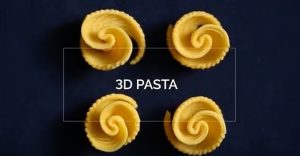 Create custom-shaped pasta to add a personalized touch to your Italian dishes.
Create custom-shaped pasta to add a personalized touch to your Italian dishes.
Ingredients:
- 200g pasta dough (homemade or store-bought)
- Food coloring (optional)
Instructions:
- Prepare the pasta dough and add food coloring, if desired, to create different colored pasta.
- Load the colored pasta dough into the 3D printer's extruder.
- Set the printer to create your desired pasta shape. Popular choices include personalized initials or themed shapes for special occasions.
- Allow the printed pasta to air dry or cook it immediately.
Recipe 3: Mini Edible Sculptures
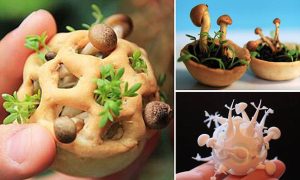
Craft mini edible sculptures that double as dessert decorations or unique party favors.
Ingredients:
- 200g modeling chocolate
- Food coloring
- Edible gold dust for decoration
Instructions:
- Prepare modeling chocolate and color it as desired.
- Load the colored modeling chocolate into the 3D printer's food-grade syringe.
- Create miniature edible sculptures using the printer's precise control.
- Once the sculptures have hardened slightly, dust them with edible gold for a touch of elegance.
Recipe 4: Custom Cake Toppers
 Design and print personalized cake toppers for special occasions.
Design and print personalized cake toppers for special occasions.
Ingredients:
- 100g fondant icing
- Edible food coloring
- Edible glitter for decoration
Instructions:
- Color the fondant icing as needed and roll it out to the desired thickness.
- Load the colored fondant into the 3D printer's food-grade syringe.
- Design and print cake toppers that match the theme of your celebration.
- Finish with a sprinkle of edible glitter for a touch of sparkle.
These recipes are just a glimpse of the creative possibilities that 3D-printed food offers. Experiment, innovate, and let your culinary imagination run wild as you explore the world of 3D printing food in your own kitchen. With each dish, you'll not only create delightful treats but also become a part of the ever-evolving culinary revolution that is 3D-printed food. Enjoy your culinary adventures!
Conclusion
In the pages of "3D Printing Food: From Pixels to Palate," we've embarked on a journey through the extraordinary world of 3D printed food, a realm where pixels become palates and innovation knows no bounds. As we conclude our exploration, let's recap the key takeaways, reflect on the transformative potential of 3D printing food, and encourage you, the reader, to further explore this exciting field.
Key Takeaways
-A Culinary Revolution: 3D printing food represents a culinary revolution, where precision, creativity, and personalization converge to redefine how we prepare, present, and savor our meals.
-Art Meets Technology: The intersection of art and technology in 3D-printed food allows for the creation of edible masterpieces that captivate not only the senses but also the imagination.
- Nutrition and Health: The technology offers the potential for personalized nutrition, addressing dietary restrictions, optimizing athlete performance, and promoting healthier eating habits.
-Challenges and Ethical Considerations: While promising, 3D-printed food comes with challenges, such as food safety and sustainability concerns. Ethical considerations include the impact on traditional culinary skills and equitable access.
-The Future of Food: The future of 3D-printed food is filled with promise. It includes greater customization, sustainability, and advancements in food materials, driven by AI and machine learning.
-DIY Food Printing: Enthusiasts can embark on their own culinary adventures with 3D printing, experimenting with recipes, designs, and personalized creations in their own kitchens.
-Interviews and Case Studies: Experts and pioneers in the field, along with compelling case studies, demonstrate the diverse and transformative applications of 3D printed food.
-The Recipe Book: A collection of 3D printable recipes that empowers readers to create edible works of art with step-by-step instructions and images.
Transformative Potential
The transformative potential of 3D printing food cannot be overstated. It is a fusion of technology, science, art, and culinary creativity that challenges conventional notions of food preparation and presentation. It is a tool for personalization, addressing dietary needs with precision, and crafting meals that are as nourishing as they are visually stunning.
3D printing food has the power to democratize culinary creativity, putting the tools of professional chefs and food artists into the hands of home cooks and enthusiasts. It is a catalyst for sustainability, reducing food waste, and offering innovative solutions to the world's food security challenges.
Explore Further
Our journey through the world of 3D-printed food is just the beginning. As you close this book, I encourage you to continue your exploration of this exciting field. Dive into the world of DIY food printing, experiment with new recipes, and push the boundaries of your culinary creativity. Engage with online communities, follow the latest developments in food printing technology, and stay curious.
Whether you're a seasoned chef, a passionate foodie, or simply someone intrigued by the future of food, 3D printing food invites you to be a part of a culinary renaissance. With each layer, each pixel, and each bite, you'll become a pioneer in the tantalizing world of 3D-printed food. Embrace the journey, and let your imagination take flight as you transform pixels into palates. The future of food is in your hands. Bon appétit!
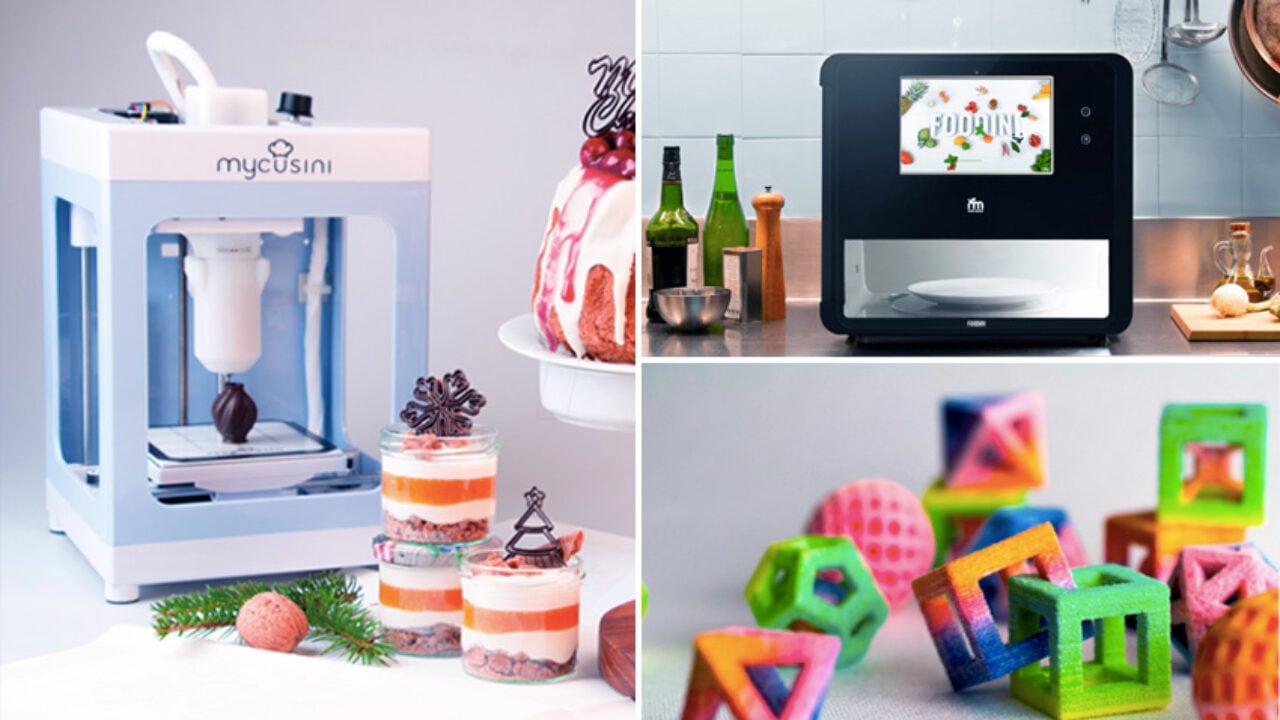
Comments are closed